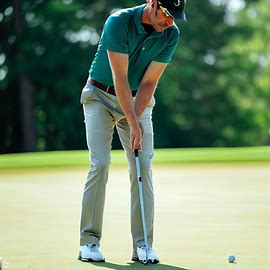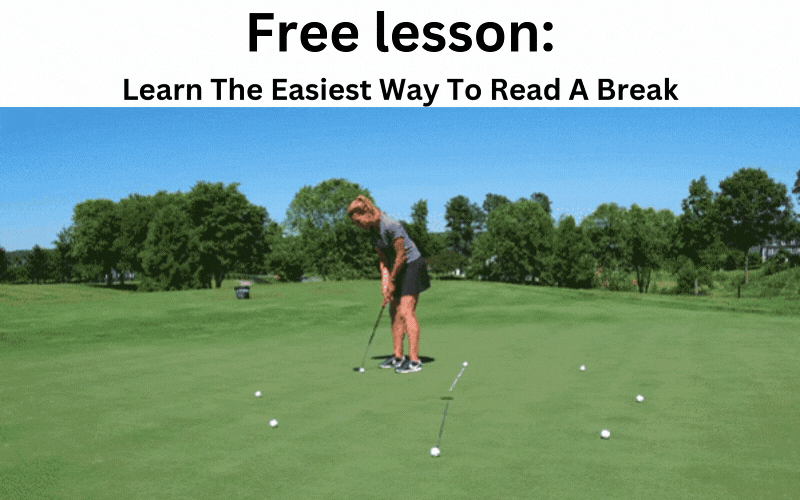
Putting is often considered one of the most important aspects of golf, as it can make or break your score. To become a successful putter, you need to master the fundamentals of grip, stance, and stroke mechanics, while also developing your ability to read greens and control the distance and speed of your putts. In this article, we'll explore some of the best golf putting techniques and tips, and provide you with drills and practice routines to help you improve your putting game.
The Fundamentals of a Good Putting Stroke
Before you can become a great putter, you need to master the basics. Here are some of the fundamental elements of a good putting stroke:
- Grip: There are several different grip styles that you can use when putting, including the traditional grip, the reverse overlap grip, and the cross-handed grip. Experiment with different grip styles to find the one that works best for you.
- Stance: Your stance when putting should be balanced and comfortable, with your feet shoulder-width apart and your weight evenly distributed. Avoid standing too close to the ball or leaning too far forward or backward.
- Alignment: Make sure that your feet, hips, and shoulders are all aligned parallel to your intended target line. This will help you aim your putts more accurately.
- Stroke Mechanics: When making a putting stroke, keep your arms and hands relatively quiet, and use your shoulders and torso to rotate the putter back and through. Keep your head still and your eyes focused on the ball.
Reading Greens
One of the most important skills for successful putting is the ability to read greens. Here are some tips for analyzing the slope, grain, speed, and overall conditions of the putting surface:
- Look at the overall slope of the green: Determine whether the green slopes uphill, downhill, or side-to-side.
- Analyze the grain of the grass: The direction of the grass grain can affect how the ball rolls on the green. Determine which way the grain is growing and adjust your aim and speed accordingly.
- Determine the speed of the green: The speed of the green will affect the distance and speed of your putts. Pay attention to the firmness and moisture level of the green to help you gauge how fast your putts should be.
- Consider the conditions of the green: Look for any bumps, humps, or undulations in the putting surface that could affect how the ball rolls.
Putting Drills and Exercises
To improve your putting, you need to practice regularly and incorporate drills and exercises that target specific aspects of your putting game. Here are some drills and exercises that can help you improve your putting:
- Distance Control Drills: Set up a series of targets at varying distances, and practice hitting putts that stop at each target. This will help you develop a better sense of distance control and speed.
- Putting Speed Drills: Set up a long putt and practice hitting putts that barely make it to the hole, as well as putts that roll past the hole. This will help you develop a better feel for the speed of the green.
- Alignment and Aim Drills: Use alignment aids such as a straight edge or alignment sticks to help you line up your putts more accurately. Practice hitting putts with the aid in place, then remove it and hit putts without it.
- Short Game Improvement Drills: Practice hitting putts from different lies and conditions around the green, such as uphill, downhill, and sidehill lies.
Putting Aids and Tools
There are several different putting aids and tools available to help golfers improve their putting game. Here are a few examples:
- Putting Mirror: A putting mirror is a small, portable mirror that helps golfers check their alignment and stroke mechanics. It typically has lines and markers that help golfers line up their feet, hips, and shoulders, and can also be used to check their eye position.
- Putting Mat: A putting mat is a flat surface with a hole at one end that simulates a putting green. It's a great tool for practicing putting indoors, and can also be used for drills and exercises.
- Alignment Sticks: Alignment sticks are long, thin sticks that can be placed on the ground to help golfers line up their feet and aim their putts more accurately. They can also be used to check the path of the putter during the stroke.
- Putter Grips: There are several different putter grip styles available, each with its own benefits and drawbacks. Experiment with different grip styles to find the one that works best for you.
Putting Psychology
The mental side of putting is just as important as the physical side. Here are some tips for improving your putting psychology:
- Develop Confidence: Believe in your ability to make putts, and visualize the ball rolling into the hole before you hit your putt.
- Focus on Your Process: Focus on the process of making a good stroke, rather than worrying about the outcome of the putt. This will help you stay present and focused on the task at hand.
- Learn to Handle Pressure: Practice putting under pressure, such as by setting up games or competitions with friends. This will help you develop the mental toughness needed to perform well under pressure.
Advanced Techniques
For more experienced golfers, there are several advanced putting techniques and tips that can help take their game to the next level. Here are a few examples:
- Claw Grip: The claw grip is a putting grip style where the golfer places their lead hand in a "claw" position, with the palm facing the target and the fingers pointing downward. This grip can help golfers stabilize their wrists and make more consistent strokes.
- Pendulum Stroke: The pendulum stroke is a putting stroke where the golfer uses a straight-back, straight-through motion, similar to a pendulum. This stroke can help golfers improve their distance control and accuracy.
- Cross-Handed Grip: The cross-handed grip is a putting grip style where the golfer places their lead hand below their trailing hand on the putter grip. This grip can help golfers reduce wrist action and make more consistent strokes.
Putting Etiquette
Finally, it's important to remember the basic etiquette rules for putting when playing with others. Here are a few examples:
- Avoid Stepping in Other Players' Putting Lines: When walking on the green, avoid stepping in other players' putting lines. This can cause the grass to become flattened and affect how the ball rolls.
- Avoid Delaying Play Unnecessarily: When it's your turn to putt, be ready to hit your shot as soon as possible. Avoid taking too long to read putts or line up your shot, as this can slow down play for other golfers.
Conclusion
Improving your putting game takes time, practice, and a willingness to experiment with different techniques and drills. By mastering the fundamentals of grip, stance, and stroke mechanics, as well as developing your ability to read greens and control the distance and speed of your putts, you can become a more confident and successful putter. Incorporate some of the tips and techniques discussed in this article into your practice routine, and watch your putting game improve over time.
